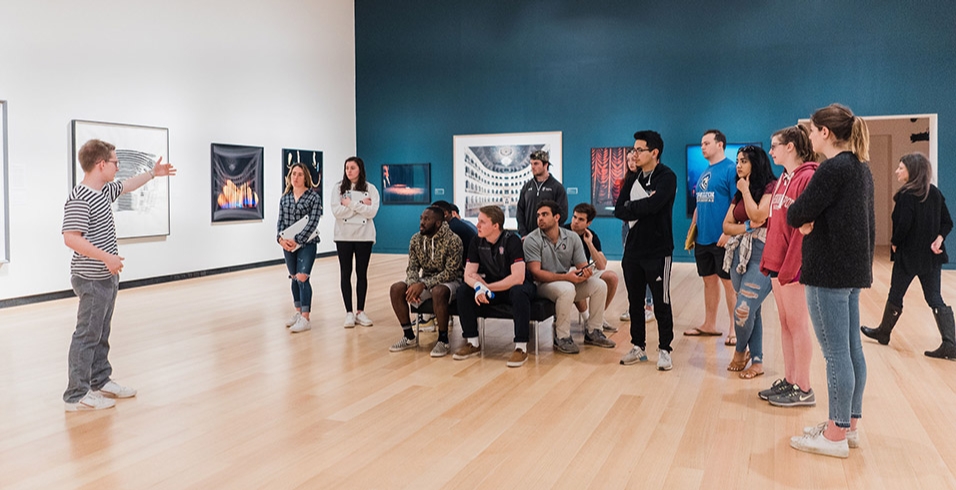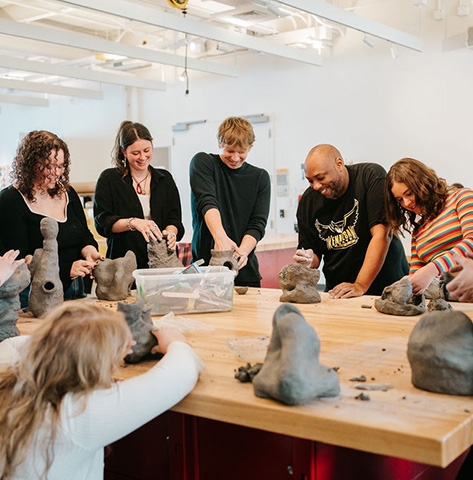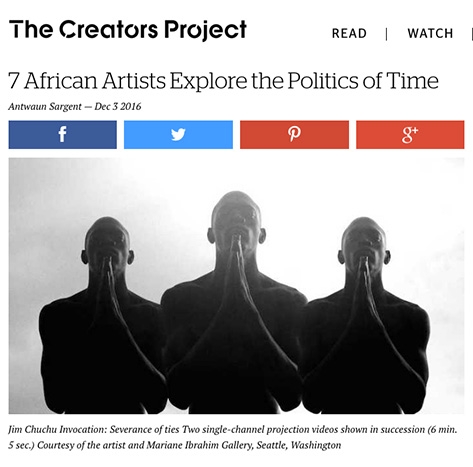Janelle Rodriguez

A Wellin museum docent is the middleman of the exhibition; the storyteller that brings the art to its viewers and vice versa. To help museum visitors of all ages engage with Theaters of Fiction, docents give people tools to think about the works. To learn more about this process, I asked docents Louis Dzialo’19 and Annie Canning’19 about their experience touring students around Theaters of Fiction.
To kick off the tour, Annie and Louis usually direct their audience to the two prints by Candida Höfer. These large-format photographs depict Schauspielhaus Dusseldorf I, a German theater, and Teatro Communale di Bologna, a famous Italian opera house. Whether it be an Animation Art or Religious Studies class, the students enjoy comparing the two works, according to Annie. While the architectural style portrayed in both photographs differs, Höfer’s works bear many similarities. Both prints’ glossy finishes and crisp colors invite viewers to glaze at the spaces’ grandeur, structure, and layout. Their opulence reflects social hierarchies, as most historical theaters were funded by and reserved for the elite. One of her tours, Annie discussed the evolution of theaters as social and cultural spaces. During this conversation, a student highlighted the layers of relationships imbedded in the artwork; not only do the theater spaces share a relationship with their photographers, but also the museum space in which they are being exhibited. Like the historic theaters, the Wellin museum itself is a cultural hub.
When Louis asked a group of high school students if they had any observations about Höfer’s work, one student pointed out that Teatro Communale di Bologna has a prominent middle aisle, a feature that allows guests to “see” and “be seen.” “I also like to talk about the two Candida Höfer works and Hiroshi Sugimoto’s black and white prints as a suite of four pieces, as I think they compliment each other,” explains Louis. On their tours, docents have the creative freedom to pair different works together and demonstrate how even the most seemingly incompatible works can be in conversation with one other. This skill helps docents answer commonly asked questions like: “Why is the art arranged the way it is?”
When entering Ceal Floyer’s Double Act installation room, Annie always instructs her tour group to stand in the spotlight. Inspired by Annie’s instructions, Louis also recommends that his group become part of the piece, as opposed to just looking at it. During a discussion of Double Act, one of Annie’s students compared the installation’s illusion to Rene Magritte’s “The Treachery of Images.” In the same way that Magritte questions the “realness” of a painted pipe, Floyer explores theatrical illusions of a curtain and its effect on the performance space. This dialogue captures an important question: does a projection of an image of a curtain accomplish the same goal as a real curtain?
To top off their experience in the exhibition, student groups enjoy the WellinWorks experimental theater space. After a gallery tour, high school students from Herkimer County received the opportunity to see how Chris Harrison manipulates the stage lights. This behind the scenes tutorial enabled students to see how lighting can be used to set certain moods on stage. A Hamilton college Animation class also made live sounds for their stop motion animation movies in the experimental theater. The professor changed the lighting during each performance to enhance the theatrical experience. Thus, Theaters of Fiction boasts art-viewer interaction on many different levels. Thanks to the docents, visitors explore the idea theatrical space, examine different interpretations of theatrical space, and partake in physical theatrical spaces.







